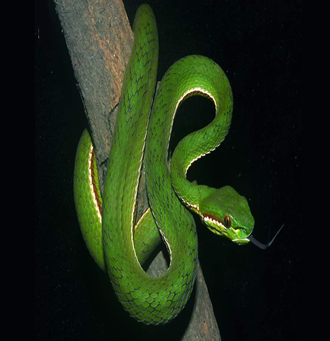

Context
The snake has been named Maya’s Pit Viper after the deceased mother of an Army officer.
- The name of the pit viper, recognised as Trimeresurusmayaae, is also believed to allude to maya, meaning the supernatural powers, or the illusion related to local legends.
About
- Pit viper, is the species of viper (subfamily Crotalinae) that has, in addition to two movable fangs, a heat-sensitive pit organ between each eye and nostril which together help it accurately aim its strike at its warm-blooded prey.
- Pit vipers are found from deserts to rainforests, primarily in the New World.
- They can be terrestrial, arboreal, or aquatic.
- Some species lay eggs and others produce live young ones.
- The snake measuring about 750 mm in length.

Why it is important?
- In a country where around 1.2 million people have lost their lives owing to snakebite and many more have lost their limbs in the last two decades.
- A discovery of a new venomous snake means a lot in the context of public health.
- Venom is a complex protein, mostly typical to a species and thus unravelling a new species will help understanding its venom and its impact on human life and perhaps will help save lives.
Snake bites in India
- The World Health Organization (WHO) estimates that about 5 million snakebites occur each year, resulting in up to 2.7 million envenoming.
- Published reports suggest that between 81,000 and 138,000 deaths occur each year.
- Snakebite envenoming causes as many as 400,000 amputations and other permanent disabilities.
- Many snakebites go unreported, often because victims seek treatment from non-medical sources or do not have access to health care.
- As a result it is believed that many cases of snakebite go unreported.
- Snake antivenoms are effective treatments to prevent or reverse most of the harmful effects of snakebite envenoming.
- They are included in the WHO Essential Medicines List and should be part of any primary health-care package where snake bites occur.
- Unfortunately many people either lack access to antivenom, or cannot afford to pay for them.
- Many families sell possessions or go into debt in order to obtain antivenom after someone is bitten.
- WHO added snakebite envenoming to its priority list of neglected tropical diseases (NTDs) in June 2017.
|
Facts: In India, around 90% of snakebites are caused by the 'big four' among the crawlers
|


